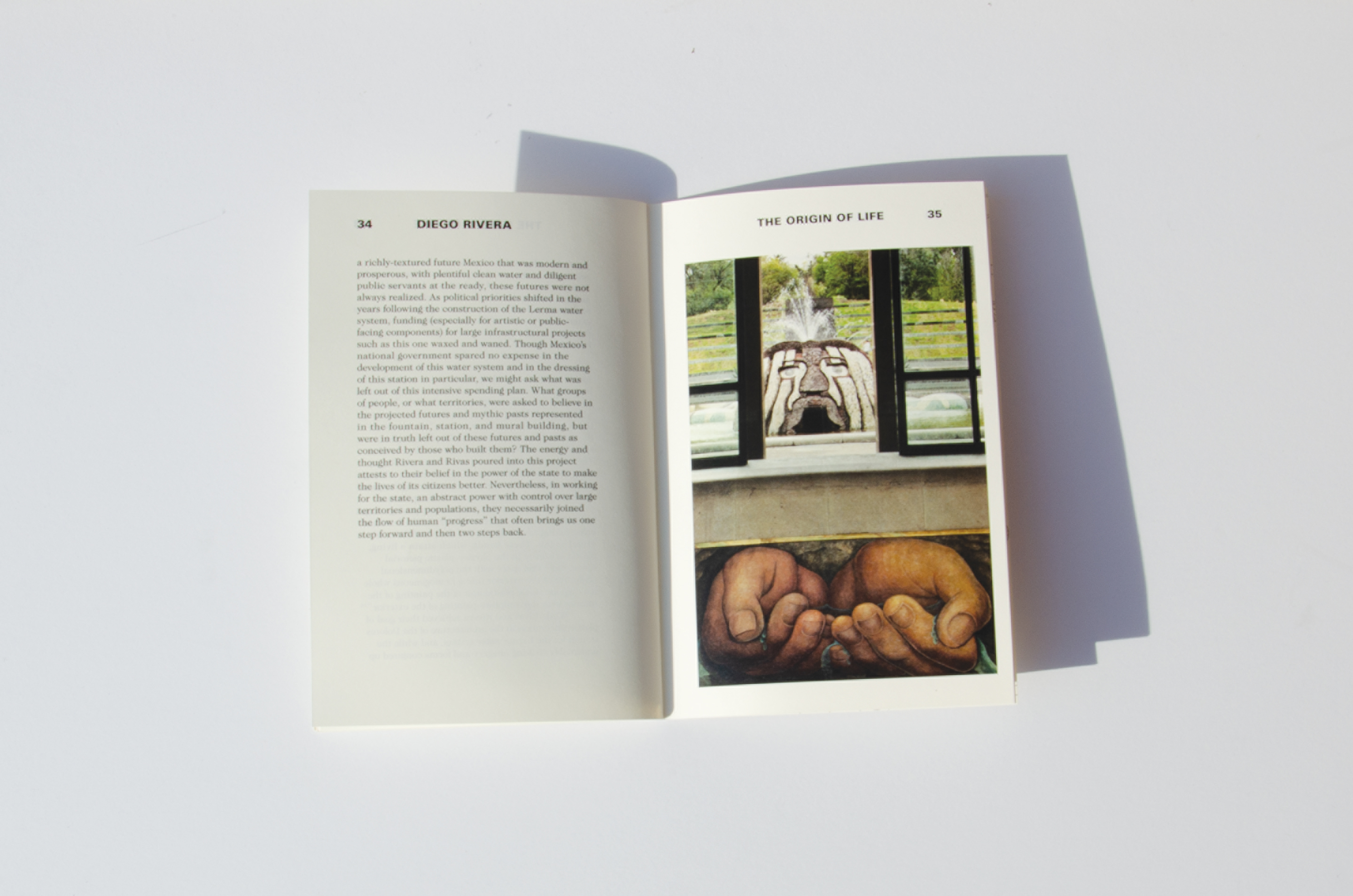1. Water, the Origin of Life

Platic Modernity, Spring 2018
Instructor: Luis Carranza
Collaborator: Elizabeth Daddazio
In the 1940s, the planners of a new waterworks system utilizing the Lerma River as a source of water for Mexico City retained the architect Ricardo Rivas to design a sump station in Chapultepec Park, the terminus of a new aqueduct bringing water into Mexico City. In coordination with the planners, in 1950 Rivas in turn commissioned Diego Rivera to design a mural and fountain for the facility. Like mural precedents such as those in the Secretaría de Educación Pública building in Mexico City, the intent of these artistic components was to turn the station building, which housed one small component of the physical infrastructure of the massive waterworks project, into a poetic explication and celebration of the bureaucratic and social infrastructure required to construct both the building itself and the project it synecdochally monumentalized. During its construction in 1951, at a key period of modernization in Mexico, the project of so-called plastic integration (borrowing from the more common Spanish term integración plástica) of this building and its constituent parts was harnessed by both the radical architectural functionalism of Rivas and Rivera and the nationalist interests of Mexico’s federal government.




This paper examimes the design of the pump station’s integrated architectural and artistic elements in the context of indeginous Mexican artistic traditions as well as modern Latin American art and architecture. The paper also situates the design works within the politics of infrastructure modernization in twentieth-century Mexico. It was typeset and published in 2018.




